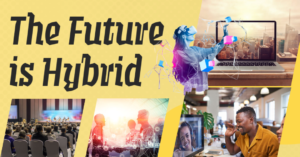Why Planning for a Digital Audience is Key to Event Success
Calling Up Justice recommends planning your events to include digital and in-person options. In today’s dynamic world, we need to be proactive and plan for success in a landscape that is more precarious for in-person meetings. By embracing hybrid presenting, we can turn challenges into opportunities and create events that are accessible, safe, and successful.
The beauty of hybrid presenting is that it provides us with the flexibility to pivot to a digital platform without losing the momentum of our event. We can plan for success by creating a plan B in case of unforeseen circumstances such as inclement weather, travel restrictions, or health concerns. Instead of scrambling at the last minute to design a digital connection, we can thoughtfully pivot and ensure a seamless experience for all participants.
Moreover, hybrid presenting creates accessibility and inclusivity for a wider range of participants. By offering both in-person and digital options, we can ensure that people with disabilities, chronic illnesses, or mobility issues can participate in our events. This is particularly helpful for international events where travel costs and visa requirements can be prohibitive for some participants. By prioritizing accessibility, we can create events that are more diverse, inclusive, and impactful.
Here are a few proactive steps that we can take to plan for a successful hybrid event.
Firstly, having a digital audience option from the beginning is crucial. By offering both in-person and digital options, participants can choose the option that works best for them, making the event more accessible and inclusive. Arranging for a camera to capture the space is a great way to provide an immersive experience for digital attendees. By investing in high-quality equipment and hiring a professional videographer, we can create an engaging and memorable experience for both in-person and remote participants.
Secondly, setting up a digital platform such as Zoom or Google Meets for group audiencing is essential for ensuring an immersive experience for all participants. By providing addresses and testing the platform beforehand and ensuring that it works correctly, we can avoid technical issues and provide a high-quality experience for both in-person and remote attendees.
Thirdly, thoughtfully designing the event to suit both in-person and digital audiences is crucial. This means taking into account factors such as lighting, sound quality, and visual aids that work well for both virtual and physical attendees. By doing so, we can create a seamless experience that is memorable and engaging for everyone involved.
In conclusion, planning for hybrid presenting is a proactive way to create successful events that are accessible and engaging for all participants. By incorporating these proactive steps such as having a digital audience option, arranging for a camera to capture the space, setting up a digital platform, and thoughtfully designing the event, we can ensure that our events are inclusive and impactful. So let’s embrace hybrid presenting and plan for a successful event that everyone can enjoy!

